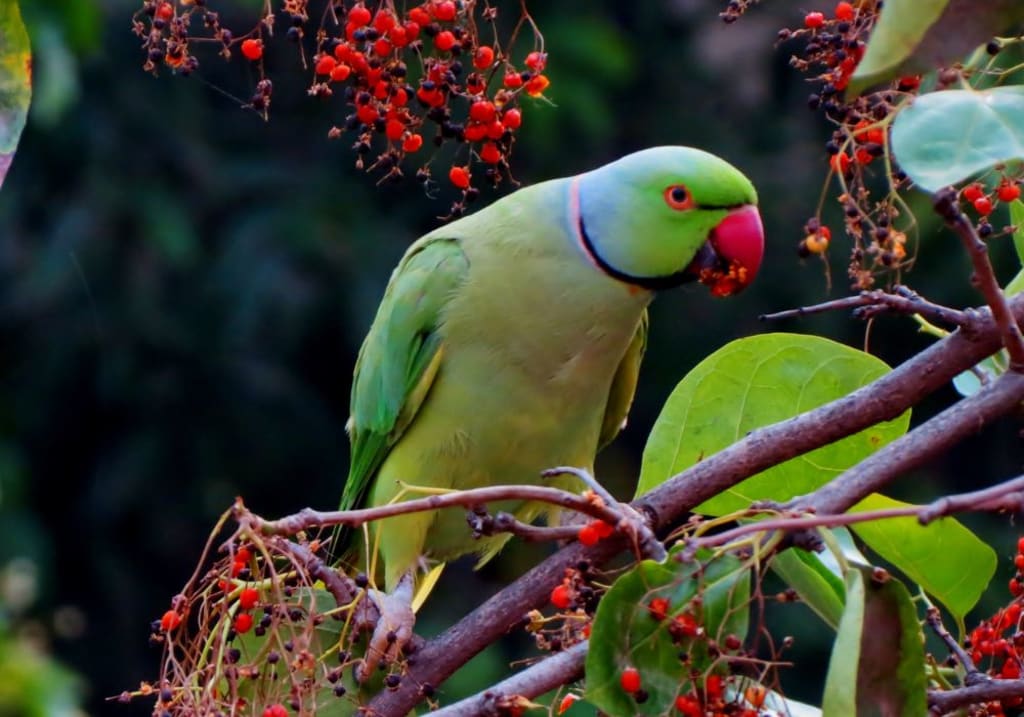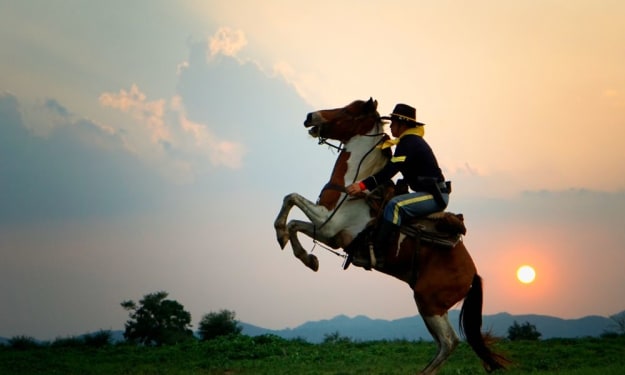Parrot Behavior
Unraveling the Mysteries of Avian Communication

Introduction to Parrot Behaviour: What makes them so Unique?
Parrots are one of the most intriguing and complex creatures on earth. With their bright plumage, seemingly endless chatter and remarkable intelligence, parrots have long captivated us with their mystifying behavior. It is precisely this complexity that has made unraveling the mysteries of avian communication such an exciting challenge for researchers and bird enthusiasts alike. In terms of communication, parrots are capable of far more than just mimicking human speech. They communicate through a variety of vocalizations including whistles, clicks, and rasps as well as body language, including head bobbing, wing flapping, and beak movements.
These vocalizations are used both for social interaction with other parrots as well as self-expression. For example, when a parrot is content or excited they will often make loud happy noises while when they feel threatened or anxious they may become quieter or make distressed calls. Parrots also have the unique ability to form strong emotional bonds with humans which can influence their behavior in both positive and negative ways. This bond has been linked to affectionate behaviors such as preening and cuddling as well as increased aggression when the human companion is absent or perceived to be a threat by the bird. Additionally, some species of parrots have even been known to show empathy towards other animals in distress. In addition to understanding how parrots communicate verbally and emotionally with humans and other birds, researchers have also studied the effects that environmental factors can have on their behavior.
Parrots have evolved very efficiently over thousands of years in order to survive in harsh climates and diverse habitats which has resulted in a variety of adaptive behaviors unique to each species such as foraging techniques and nest building skills. Similarly, captive parrots require environments that mimic natural conditions in order for them to behave normally; if these needs are not taken into consideration then abnormal behavior can result such as feather plucking or self-destructive habits like biting themselves or pulling out feather feathers from their own body. Overall, parrot behavior continues to fascinate us all due to its complexity yet familiarity which makes it so appealing whether you’re an aspiring pet owner or a dedicated researcher seeking answers about avian communication. Although there is still much to learn about these majestic creatures, we continue unraveling their mysteries piece by piece.
Exploring the Different Types of Parrot Communication
Parrots are well-known for their expressive and often entertaining communication. From calling out to their flock members to their colorful displays of mimicry, these birds have a wide array of ways they communicate. While parrot behavior is complex and multi-layered, understanding the basics can help us unravel the mysteries of avian communication.
Vocalizations
Parrots use vocalizations to communicate with their flock or potential mates. Parrots produce many types of vocalizations, such as chirps, trills, screeches and squawks. These sounds are used to indicate various emotions such as happiness or distress, and can be used to court potential mates or express dominance in the flock. Understanding these vocalizations is key in interpreting parrot behavior.
Body Language
In addition to vocalization, parrots also use body language to communicate with each other. This includes posturing such as “head bobbing” when a bird is feeling aggressive or excited; “preening” when a bird is trying to make an impression on another; and “stretching” which can indicate excitement or relaxation. By observing these behaviors in our pet birds we can better understand how they are feeling and respond appropriately.
Mimicry
One of the most fascinating aspects of parrot behavior is its ability to mimic sounds from its environment including human speech. Though this type of mimicry has been studied extensively in some species like African Grey Parrots, scientists still don't fully understand why some birds are able to learn speech while others cannot. This makes understanding avian communication all the more intriguing as we look for ways to unlock some of its secrets.
Conclusion
Overall, parrots have an incredibly sophisticated way of communicating with one another that often goes unnoticed by humans who observe them in captivity. By understanding the basics of avian communication we can gain insight into how parrot behavior works and begin unlocking some of its mysteries when it comes to avian communication. In doing so, we will be able to develop more meaningful relationships with our pet birds and enjoy them even more than before!
Investigating the Impact of Environment on Parrot Behaviour
Parrots are fascinating creatures that have long captivated humans with their remarkable intelligence and incredible ability to mimic human speech. However, much remains unknown about avian communication and how parrots use their environment to shape and influence behavior. Investigating the impact of environment on parrot behavior is key to understanding these enigmatic birds.
A variety of environmental factors can influence parrot behavior, from the temperature in their habitats to the availability of food sources. Temperature, for example, has been proven to affect a parrot’s vocalizations. In cold temperatures, parrots are less likely to vocalize because they need more energy to maintain body temperature. Conversely, in warmer temperatures, parrots are more vocal because they don’t need as much energy to stay warm.
Researchers have also found that environmental factors can play a role in determining a parrot’s level of aggression or shyness. A bird kept in an overcrowded habitat with very little stimulation may display more aggressive behavior than one kept alone in a larger cage with lots of toys and space to explore. Consequently, providing plenty of toys and perches for your pet parrot is essential for keeping it stimulated and content while reducing its risk of developing behavioral problems due to boredom or stress.
Not only does the physical environment influence Parrot behaviour but so do social interactions within it. Studies have shown that birds living in larger flocks tend to exhibit higher levels of aggression than those living in smaller groups or alone. This could be due to increased competition for food or territory within the flock or simply because birds become more stressed when there are too many individuals present at once. Whatever the reason may be, it’s important for pet owners to keep their flock size small if possible and provide plenty of space for each bird so that they can avoid potential conflicts with one another.
In addition to physical environment and social dynamics, noise pollution can also affect a Parrot's behaviour significantly if they are exposed to high levels over prolonged periods of time as this can increase stress levels and cause them discomfort. As such, pet owners should make sure that their bird's habitat is situated away from any sources of loud noise such as busy roads or construction sites whenever possible if they want their pets to remain happy and healthy.
In summary, investigating how environment influences Parrot behaviour is key in order improve our understanding about these enigmatic creatures so that we can better meet their needs while providing them with enriching lives as our feathered friends.. Environment plays an important role in shaping avian communication so creating an optimal habitat with plenty of stimulation is essential for promoting healthy behaviour patterns among pet birds.
Common Misconceptions about Parrot Communication
Parrots are highly intelligent, social creatures, and many people find them fascinating—especially when it comes to their ability to communicate with humans. Unfortunately, there are some common misconceptions about parrot communication that can lead to misunderstandings. For example, many people assume that parrots only learn words they’ve heard humans say and mimic them. But while parrots can copy words better than most animals, their language skills go far beyond mere mimicry. Parrots also have their own unique forms of vocalizations which are not necessarily mimicry of human speech. Depending on the species of the parrot, they use a variety of sounds and calls to communicate with each other in the wild.
This includes high-pitched whistles, squawks, chirps, and clicks as well as physical displays such as bowing or bobbing their heads up and down. They use these vocalizations to show excitement or contentment, mark territory or attract mates, or even express displeasure. Another misconception is that parrots understand what they say. While it’s true that some parrots may recognize words associated with certain activities—like getting food—it’s unlikely that they have an understanding of grammar or syntax as we do in human language. Instead, they rely more heavily on tone and context than we do when communicating with each other—and this can often lead to confusion for owners who expect too much from their pets. It’s also important to understand that not all parrots will become talkers—even if you provide plenty of opportunities for them to interact with humans and learn new words.
While some species are renowned for their talking abilities (such as African Grey Parrots), others may never learn more than a few words or phrases regardless of how much interaction they receive from their owners. It’s also important to remember that talking isn't necessarily indicative of a happy bird—in fact it can be caused by stress in some cases. Ultimately then there is still a lot we don't yet know about avian communication; however understanding the basics can help owners better appreciate these intelligent creatures and avoid disappointment when it comes to expectations around talking ability.
Why Understanding Parrot Communication is Important
Parrot communication is an integral part of the parrot's life. It plays a vital role in helping parrots develop relationships with others, express themselves, and find food. Without the ability to communicate effectively, parrots would struggle to thrive in their natural habitats. Therefore, understanding the nuances of avian communication is essential for providing proper care for pet parrots. This article will explore the basics of avian communication and why it’s important to understand it. We will look at how parrots use vocalizations to communicate, as well as visual cues such as body language and plumage displays. Finally, we'll discuss some strategies that can be used to help pet owners better interpret their parrot’s communication.
Vocalizations
Parrots are incredibly vocal animals; they can produce a wide range of sounds including squawks, caws, whistles, and even mimic human speech. These vocalizations serve different functions depending on the situation. For instance, some vocalizations are used to signal danger or alert others of potential predators while others are used to attract mates or ward off competition from other males during breeding season. One of the most interesting aspects of parrot communication is its complexity; many species have developed sophisticated methods of communicating with each other through unique vocal languages specific to their species – something humans have not yet achieved! For instance, red-tailed hawk macaws have been observed using more than 600 different types of calls when interacting with other members of their flock – this level of sophistication is unheard-of among non-avian species!
Body Language & Plumage Displays
In addition to vocalizations, parrots also utilize visual cues such as body language and plumage displays to communicate with one another. Body language can include movements such as head bobbing or wing flapping which may indicate aggression or submission respectively. Plumage displays involve displaying specific parts of a bird's feathers in order to attract potential mates or intimidate rivals in competition for resources like food or nesting sites.
Interpreting Parrot Communication
For those caring for pet parrots it’s important to understand how these animals communicate so that they’re better able to interpret their behavior and respond appropriately. Some strategies that can be useful in this regard include: paying close attention when observing your pet’s behavior; remaining calm when communicating with your pet; understanding that birds use different types of signals depending on the situation; and recognizing subtle changes in your pet’s behavior which may indicate stress or fearfulness. Overall there is still much we don't know about avian communication however by studying the behaviors and habits of these fascinating creatures we may unlock further mysteries about how they interact with each other - and us! Understanding parrot communication is key for providing proper care for our feathered friends.
Conclusion
Parrot behavior is a fascinating subject that scientists are still trying to unravel. While it is true that parrots lack the capacity for complex vocal communication like humans, they do possess a remarkable ability to communicate with one another and with other species. Studies have shown that parrots can distinguish between species-specific sounds and even recognize individuals based on their vocalizations. Despite their limited range of sounds, parrots can convey a wide range of messages including alarm calls, greeting calls, contact calls and social calls. Ultimately, understanding parrot behavior requires researchers to take into consideration both the physical and behavioral aspects of avian communication. By examining vocalizations, body language and nesting habits, scientists can continue to uncover the mysteries of avian communication.
About the Creator
Hasan
Welcome...
In this site of mine you can learn amazing things and many information that you don't know so please subscribe to my site.
Enjoyed the story? Support the Creator.
Subscribe for free to receive all their stories in your feed. You could also pledge your support or give them a one-off tip, letting them know you appreciate their work.






Comments
There are no comments for this story
Be the first to respond and start the conversation.